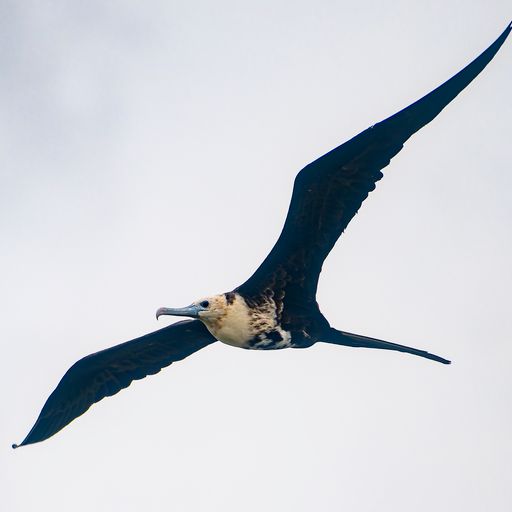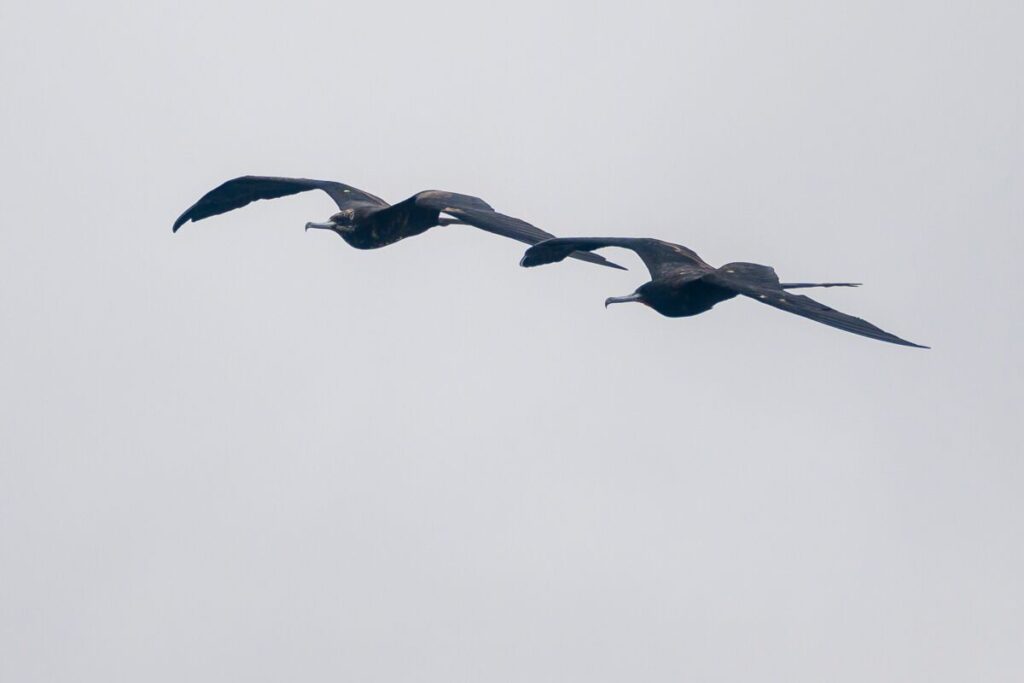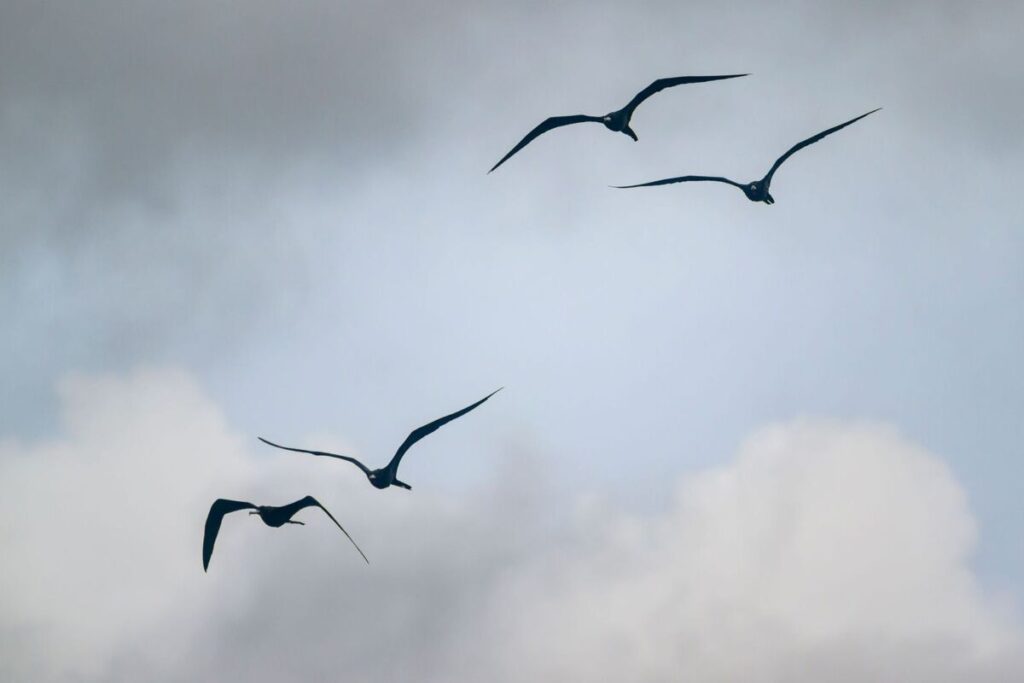Blown away birds
Hurricane season can provide glimpses of birds not often seen in the region.

Magnificent frigatebirds fly along the north shore of Lake Weir on Aug. 30, 2023. As Hurricane Idalia winds began to subside, dozens of the ocean-going birds headed southwest back to their usual surroundings on the coast. [Kent Weakley, Special to the Gazette]
As Hurricane Idalia passed north of Ocala on Aug. 30, strong storm winds blew birds off course and disrupted migratory routes.
While many birds will find a safe place to ride out a storm, other birds may attempt to outfly or avoid hurricanes. Many birds come inshore seeking food or shelter ahead of or immediately after a storm. Flocks of seabirds are observed flying ahead of a storm, using the winds to flee. Even rarely seen seabirds, who typically prefer isolation, will gather, and fly inland seeking safety.
Birds are observed within storms, flying downwind to stay aloft. They may get trapped within the storm and carried along, far from their intended destination. Migrating birds can be blown off-course by the force of the winds. Caught in the eye of the storm, carried hundreds of miles, these birds can be lost and tired, separated from familiar landmarks and food sources.
Kent Weakley, a local birder and owner of Blue Sky Graphic Communication, Inc., noted, “Last year, during Hurricane Nichole, I landed 12 new species for the county and some all-time firsts, including a pomarine jaeger over Lake Weir. That storm had bands that stretched into our county, blowing from NNE to SSW. Think of storms and the radiating bands like conveyor belts delivering birds inland from the coast and even from far out to sea. This last storm pulled birds from south Florida and brought them to Marion County.”

Magnificent frigatebirds fly along the north shore of Lake Weir on Aug. 30, 2023. [Kent Weakley, Special to the Gazette]
Another species, magnificent frigatebirds, with distinctly deeply angled wingspans of 7 to 8 feet, prefer to remain aloft, foraging above the oceans. Despite their size and bravado, frigatebirds do not have water resistant wings. If a frigatebird lands in the water or gets wet, it will be unable to fly. The Audubon Society checklist traces a route of magnificent frigatebirds up the center of the peninsula in advance of the storm.
Weakley photographed a gathering of these enormous seabirds near Gator Joe’s on Lake Weir.
“I witnessed 68 frigates,” Weakley enthused, mentioning that there could have been as many as 100 magnificent frigatebirds above the lake. He recorded several species that may have been avoiding the storm, including black-bellied plover and sanderlings.
“The birds are a bit off-course, but as soon as the weather clears, they move out and return to the coasts. Think of it like when your GPS takes you to the wrong address. Once you realize you’re not in the right place, you turn around and go back. That’s pretty much what these birds do,” Weakley said.
While birds may have a hard time finding their favorite foods, most of the displaced species will find their way home after the storm passes.
If you see an unfamiliar bird, you can record your sighting on eBird, run by the Audubon Society and the Cornell Lab of Ornithology. Even recording familiar birds after a storm can be helpful. These sightings help us understand bird—and tropical storm—behavior.
“Also, I think we humans have no idea of the birds’ abilities because we compare our physical abilities to theirs. In other words, we think walking 10 miles in one day is extreme. Birds can easily fly hundreds of miles in one day under normal circumstances. So, heading to the beach for them is not that big a deal,” Weakley noted.
For more information and to record bird sightings, visit the Cornell Lab of Ornithology at ebird.org/home

During Hurricane Idalia, magnificent frigatebirds flew over Lake Weir on Aug. 30, 2023. [Kent Weakley, Special to the Gazette]





